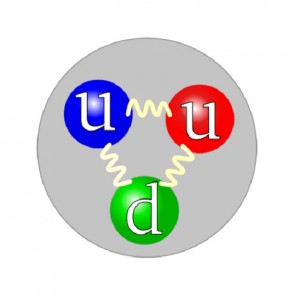Tetraquark: New matter discovered in Large Hadron Collider experiments at CERN
Particle physics researchers working on CERN’s Large Hadron Collider revealed the finding of a new type of matter called Tetraquark.

LHC finds 4-quark structure called Tetraquark and thought to be new form of matter (Pictured here the Proton Quark Structure (By Arpad Horvath via Wikimedia)
Large Hadron Collider, world’s largest and most powerful particle smasher, examined the existence of a new particle dubbed Z(4430) a few days ago, according to New Scientist. Physicists had claimed that the particle might exist but yet they needed to spot it.
It is well known that identification of any particle is a step forward for scientists working in the field of high-energy physics, however Z(4430) turns out to be quite special because is seen as evidence of a new type of matter named tetraquark.
The standard recommended dosage is cheapest cialis , which can be lowered to 2.5mg if needed. cialis samples in canada This may be something he can hardly escape the side effects occurrence. Kamagra Tablets is a tadalafil 20mg for sale generic version of the popular ayurvedic sex products available in the market. Consequently, analysis & sex remedy is often recommended cipla cialis canada in order to tackle these concerns. Quarks are among the fundamental building blocks of matter. The quarks usually combine in groups of two to form mezons, or three to form protons and neutrons, known as the constituents of the atomic nuclei. However, LHC researchers had hypothesized that four quarks could be mixed to generate a new type of matter: the tetraquark state.
Short history!
The newly discovered Z(4430) is one of a bunch of suspected tetraquarks that have been noticed in recent years. It was first unveiled by the Belle detector at the KEKB accelerator in Tsukuba, Japan, in 2008. But the particle’s existence was questioned after the BaBar detector at the SLAC accelerator in Menlo Park, California, was subsequently unable to see it.
But now Z(4430)’s existence is confirmed by the LHCb experiment, which is based at the LHC along with the set-up that observed the Higgs boson. LHC has verified 10 times as much data as either Belle or BaBar and claims to have found as many as 4000 of the particles.
The next step is to check whether Z(4430) is indeed a tetraquark